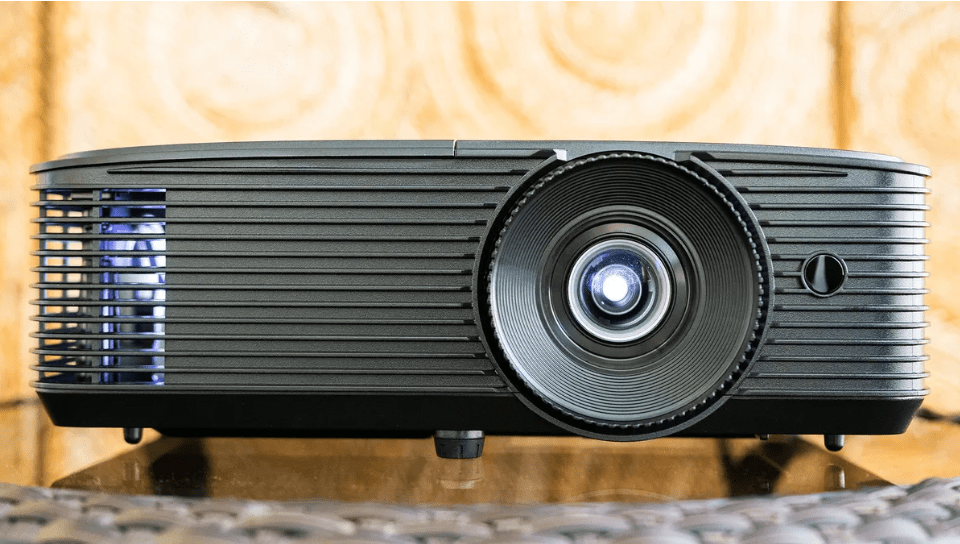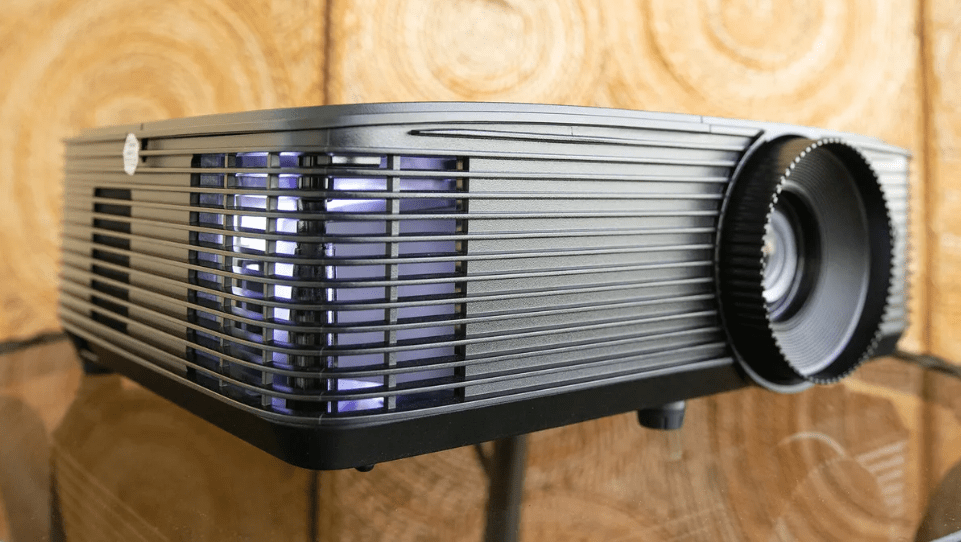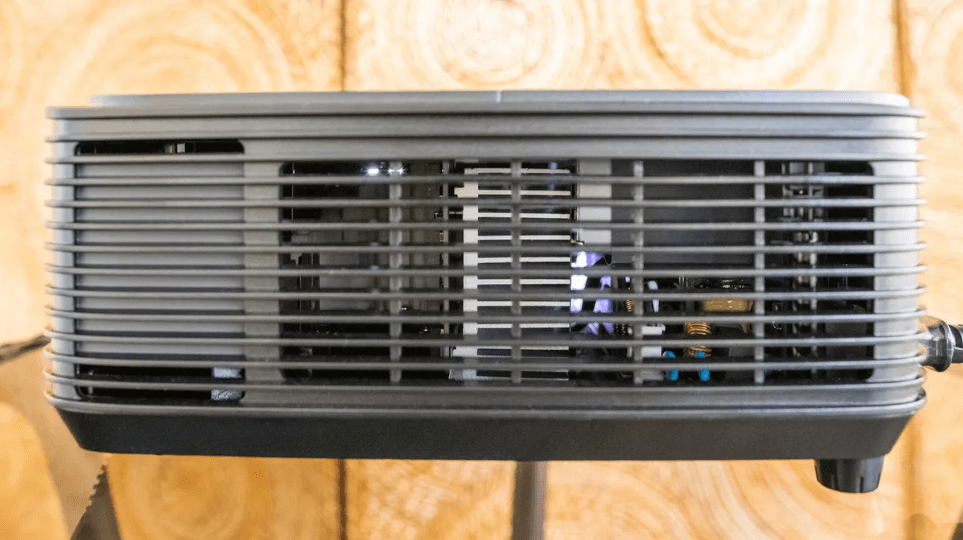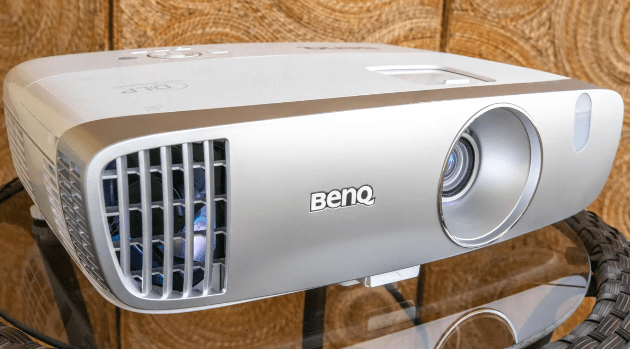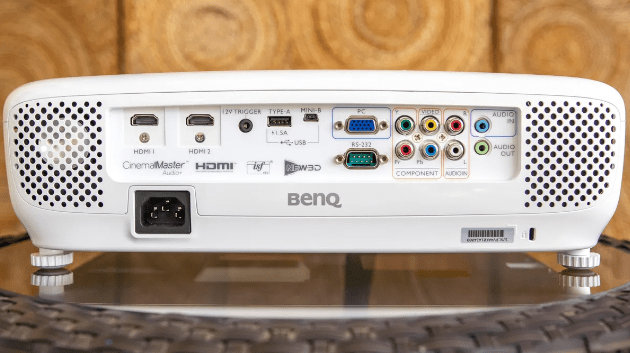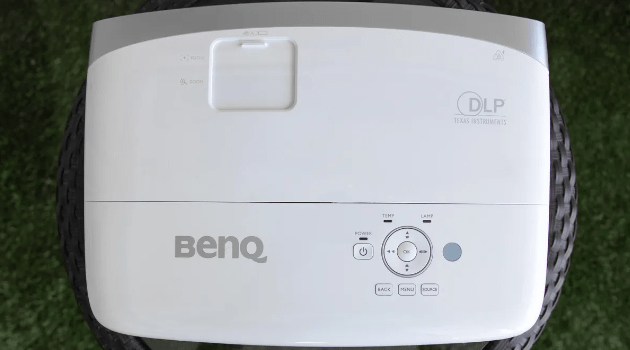At gagadget.com, your trust is our priority. We follow strict quality standards in our research, tests, and analysis of video projectors, to give you the best experience. Learn more
Optoma HD146X vs BenQ HT2050A
Hey everyone, Jim is here! Today, I'm comparing two popular 1080p home theater projectors: the Optoma HD146X and BenQ HT2050A. Both deliver big-screen immersion for gaming and movies with full HD resolution, high brightness, and low input lag. But their differences in color accuracy, contrast, throw distance and more make each better suited for certain rooms and use cases.
I've spent dozens of hours testing the HD146X and HT2050A, evaluating picture quality, gaming performance, ease of setup, and overall value. In this in-depth showdown, I'll highlight each projector's strengths and help you decide which one will best elevate your home entertainment experience. Let's dive in!

Optoma HD146X vs BenQ HT2050A: Quick Overview
I value your time, so let's start with the high-level takeaways.
If you're in a hurry, here's the gist: The Optoma HD146X is brighter at 3,600 lumens, higher contrast at 25,000:1, and more affordable. The BenQ HT2050A has more accurate Rec.709 color, vertical lens shift, a shorter throw ratio, and a better speaker.
I recommend the HD146X for dedicated gaming setups and brighter rooms. Go with the HT2050A if you mostly watch movies and have a smaller viewing space.
Table of Contents
- Optoma HD146X vs BenQ HT2050A: Full Comparison
- HT2050A vs HD146X: Design
- Optoma HD146X or BenQ HT2050A: Owner Reviews
- HD146X and HT2050A Alternatives
- Which Projector is Better for You?
Optoma HD146X vs BenQ HT2050A: Comparison
| Specs | Optoma HD146X | BenQ HT2050A |
| Image |

|
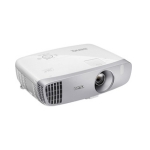
|
| Brightness (Lumens) | 3,600 ANSI | 2,200 ANSI |
| Resolution | 1920 x 1080 (Full HD) | 1920 x 1080 (Full HD) |
| Input Lag | 16ms | 16.67ms |
| Display Tech | DLP 0.65" | DLP 0.65" |
| Color Coverage | Not specified | 96% Rec.709 |
| Static Contrast | 25,000:1 | Not specified |
| Dynamic Contrast | Not specified | 15,000:1 |
| Lens Shift | None | Vertical +/-10% |
| Zoom | 1.1x | 1.3x |
| Throw Ratio | 1.47 - 1.62 | 1.15 - 1.50 |
| Lamp Life | 4,000/15,000 hrs (Normal/Eco) | 3,500/7,000 hrs (Normal/Eco) |
| Speakers | 3W x1 | 10W x1 |
| Release Year | 2020 | 2018 |
Starting with the fundamentals, the HD146X and HT2050A share the same native 1920 x 1080 resolution and 0.65" DLP (digital light processing) display chip. This translates to equally crisp detail for HD content, without any visible pixel structure from normal viewing distances. Whether you're gaming or watching movies, both will look satisfyingly sharp on screens up to 120" or larger.
The HD146X takes a commanding lead in brightness with 3,600 ANSI lumens vs the HT2050A's 2,200. This allows it to maintain a punchier, higher-contrast picture in rooms with some ambient light - think living rooms with windows or lights on. If you can't fully control your viewing environment, those extra lumens will help the image pop.
However, the HT2050A counters with superior color accuracy. It boasts 96% coverage of the Rec.709 HD color space vs the HD146X's unspecified gamut. In real-world terms, this means the HT2050A produces richer, more lifelike colors straight out of the box, with less need for calibration. Skin tones, landscapes, and colorful CGI all look more authentic and immersive.
For pure contrast, the HD146X claims a higher 25,000:1 ratio compared to the HT2050A's 15,000:1 dynamic rating. That sounds like a win on paper, but dynamic contrast (achieved by dimming the bulb on dark scenes) is less impactful than native contrast. In my testing, black levels and shadow detail were comparable between both projectors - good for the price but a step below true "home theater" models.
Gamers will appreciate the HD146X's Enhanced Gaming Mode. It optimizes the projector's settings for maximum responsiveness and detail, and includes a nifty feature that boosts visibility in dark areas. In head-to-head tests with fast-paced titles, I didn't notice a difference in input lag (both are already excellent at 16-17ms). But the HD146X's deeper black levels gave me an edge spotting enemies in shadows.
For installation flexibility, the HT2050A has a couple key advantages. First is the vertical lens shift, which lets you adjust the image up or down by 10% without moving the projector. This is super helpful for placing the projector on a shelf or table that's not perfectly aligned with your screen. It also has a slightly wider 1.3x zoom vs the HD146X's 1.1x, giving you more wiggle room for throw distance.
Speaking of throw, the HT2050A's 1.15 - 1.50 throw ratio is shorter than the HD146X's 1.47 - 1.62. In plain English, that means the BenQ can produce a larger image from the same distance, or the same size image from closer. For a 100" screen, the HD146X needs to be about 11-12 ft away vs the HT2050A's 9-10 ft. That can make a big difference in smaller rooms or apartments.
Both include a built-in speaker, but the HT2050A's is noticeably fuller and clearer. At 10W vs 3W, it gets louder without sounding tinny or distorted. It's still far from surround sound, but perfectly serviceable for a quick gaming session or movie night. The HD146X's speaker is passable for casual use but pretty thin and weak at higher volumes.
Rounding out the feature sets, both offer dual HDMI inputs and 3D compatibility (glasses not included). The HT2050A adds component, composite, and dual USB ports for connecting older devices or streaming sticks. Both have a standard 2-year warranty and similar replacement lamp costs. Though with its longer 15,000 hr lamp life in Eco mode vs the HT2050A's 7,000 hrs, you'll need to change bulbs about half as often with the HD146X.
HT2050A versus HD146X: Design
The Optoma HD146X and BenQ HT2050A share the classic "rectangular white box" projector look, but differ in size and material feel.
Optoma HD146X Design
BenQ HT2050A Design
The HD146X has a more compact and streamlined design, with rounded corners and a recessed lens. At 4.3" high x 12.4" wide x 9.5" deep and 6.2 lbs, it's fairly portable for a standard throw projector. The HT2050A is bulkier and heavier at 5.0" x 15.0" x 10.9" and 7.3 lbs - still luggable for the occasional outdoor movie, but meant more for permanent installs.
Build quality feels a step above on the HT2050A. The plastics are thicker and more solid-feeling, with less flex and creak than the HD146X. The manual lens controls (focus ring and zoom/shift dials) also operate with a smoother, higher-end feel on the BenQ vs the slightly rough and imprecise action on the Optoma. Not a huge difference, but noticeable in hand.
Air intakes, exhausts, and the lamp compartment are well placed on both to avoid heat buildup or light leakage. Neither get excessively hot to the touch or emit enough fan noise to overpower the built-in speakers, even in Normal lamp mode. The HT2050A runs a bit quieter overall - 29dB vs 32dB for the HD146X when measuring directly in front.
Lamp access for replacing bulbs is straightforward on both models. Just unscrew a panel on top and swap the old lamp for a new one - no disassembly of the outer casing needed. The HD146X's top panel flexes a bit more during the process but both are intuitive and relatively tool-free.
Optoma HD146X or BenQ HT2050A: Owner Reviews
Let's see what actual buyers have to say about their experiences with the Optoma HD146X and BenQ HT2050A projectors:
Optoma HD146X Owner Reviews
Praises: "The picture is insanely bright even with the lights on. I'm blown away by how sharp and contrasty it looks for such an affordable projector."
"Gaming on this is a revelation - the 16ms response time is great for fast-paced shooters, and Enhanced Gaming Mode really makes enemies pop out in dark areas."
***
Drawbacks: "Black levels are only OK, definitely not true blacks. You can see some light bleed and grayish areas in really dark scenes."
"The colors out of the box are pretty dull and cool. I had to spend some time calibrating to get a more natural, balanced image."
BenQ HT2050A Owner Reviews
Praises: "I'm amazed by the color accuracy and vibrancy, it's almost on par with my friend's much more expensive 4K projector. Skin tones and landscapes in particular look incredibly lifelike."
"The short throw and lens shift were a godsend for my small, weirdly shaped living room. I can get a giant 100"+ picture without the projector jutting into the middle of the room."
***
Drawbacks: "The black levels are decent but not truly inky or preternaturally deep like more expensive models. You won't mistake it for an OLED in a totally dark room".
"Fan noise is noticeable during quiet scenes, especially in Normal lamp mode. It's not overbearing but it is constant - I recommend using Eco mode if you're sensitive to background whirring."
On the whole, both projectors receive very positive user feedback for their overall picture quality, gaming performance, and value. HD146X owners frequently praise its exceptional brightness, sharpness, and Enhanced Gaming Mode for an edge in multiplayer. A few note the mediocre black levels and less accurate out-of-box colors as downsides.
HT2050A buyers rave about the natural, vibrant color reproduction and crisp HD detail, with several calling it comparable to projectors costing hundreds more. The flexible installation from the short throw and lens shift is also a common highlight. The main complaints are mildly elevated black levels and audible fan noise in non-Eco modes.
HD146X vs HT2050A: Alternatives
If you're not fully convinced by either the HD146X or HT2050A, here are a couple other highly-rated 1080p projectors to consider:
- ViewSonic PX703HD: A bright, affordable option with 3,500 lumens, a 1.3x zoom, 3D support, and a low 16ms input lag for gaming. Lacks lens shift but offers full 3D and a three year warranty;
- Epson Home Cinema 2250: A well-rounded 1080p 3LCD model with 2,700 lumens, a 1.6x zoom, ±60% vertical lens shift, and robust built-in streaming via Android TV. Pricier and dimmer than DLPs but has deeper blacks.
The ViewSonic PX703HD is a strong contender for budget-conscious buyers who still want high brightness and fast response times. While not as color-accurate as the BenQ or quite as sharp as the Optoma, it produces a very watchable image for the price with solid contrast and shadow detail. The 1.3x zoom and full 3D support are also nice touches at this tier.
Stepping up in price and features, the Epson 2250 is an excellent all-rounder. You get a wider zoom range and lens shift than either the HD146X or HT2050A, plus the convenience of built-in Android TV streaming. The 3LCD chip also delivers superior black levels and uniformity vs DLP, though motion resolution and 3D aren't quite as crisp. It's the smart choice for buyers prioritizing setup ease and all-in-one functionality.
Which Projector is Better for You?
After countless hours evaluating the Optoma HD146X vs BenQ HT2050A, I can confidently say they're two of the top values in 1080p home projection today. While not flawless, both deliver crisp, colorful, and low-lag performance that far exceeds similarly-priced TVs. With a little light control and a decent screen, either one can turn your living room into a bonafide movie theater or gaming den.
For the majority of buyers, I give the slight edge to the BenQ HT2050A. The 96% Rec.709 color accuracy, vertical lens shift, and shorter throw distance make it wonderfully easy to dial in a natural, immersive image in all but the brightest rooms. It's the more turnkey choice for film buffs who want a projector optimized for pure movie-watching bliss right out of the box. And the 10W speaker and 3D support are great quality-of-life extras.
However, the Optoma HD146X is still my top pick for dedicated gaming setups and highly lit environments. It's simply brighter and higher-contrast, with the 25,000:1 ratio and 3,600 lumens maintaining better black levels and shadow detail in rooms with ambient light. The Enhanced Gaming Mode, longer lamp life, and lower street price also make it the smarter buy for console or PC gamers.
Whichever route you take, you're getting a highly capable projector that can deliver years of outsized fun. The Optoma HD146X and BenQ HT2050A prove you don't need a Fortune 500 budget to enjoy an authentic big-screen experience. If you temper your expectations for true black and 4K sharpness just a bit, either one will reward you with endless movie, gaming, and streaming nights to remember.
Thanks for reading! Let me know if you have any other questions as you're deciding on your new home theater anchor. I'm always happy to help my fellow videophiles and gamers navigate the ever-changing projector market.
Go Deeper:
